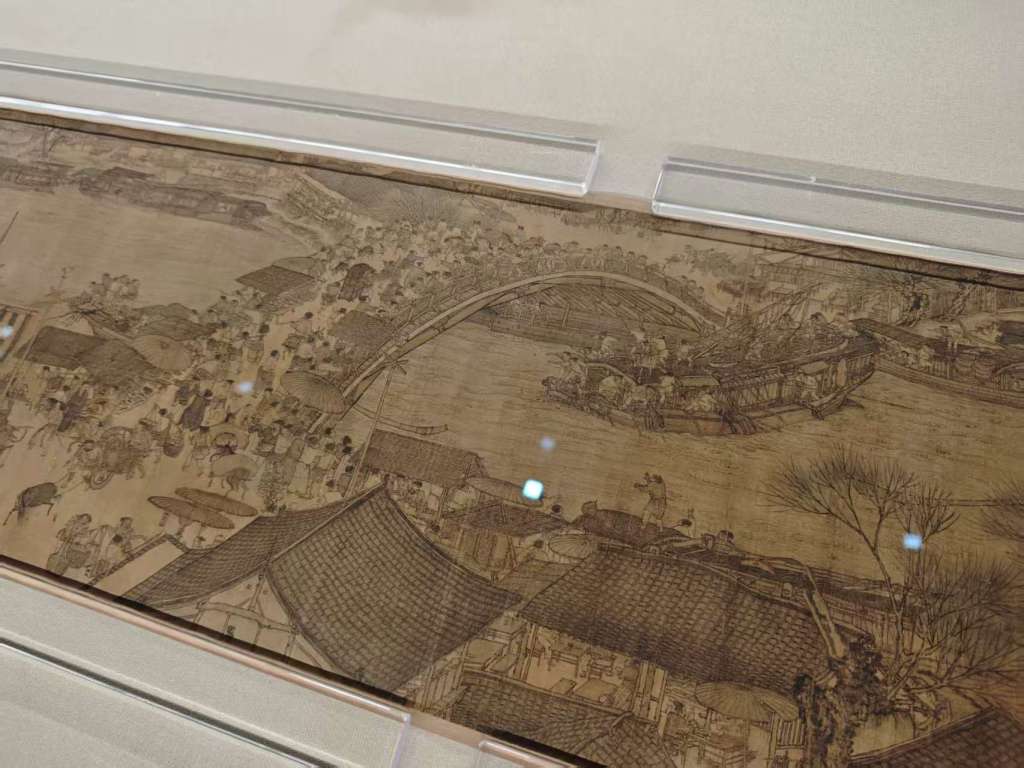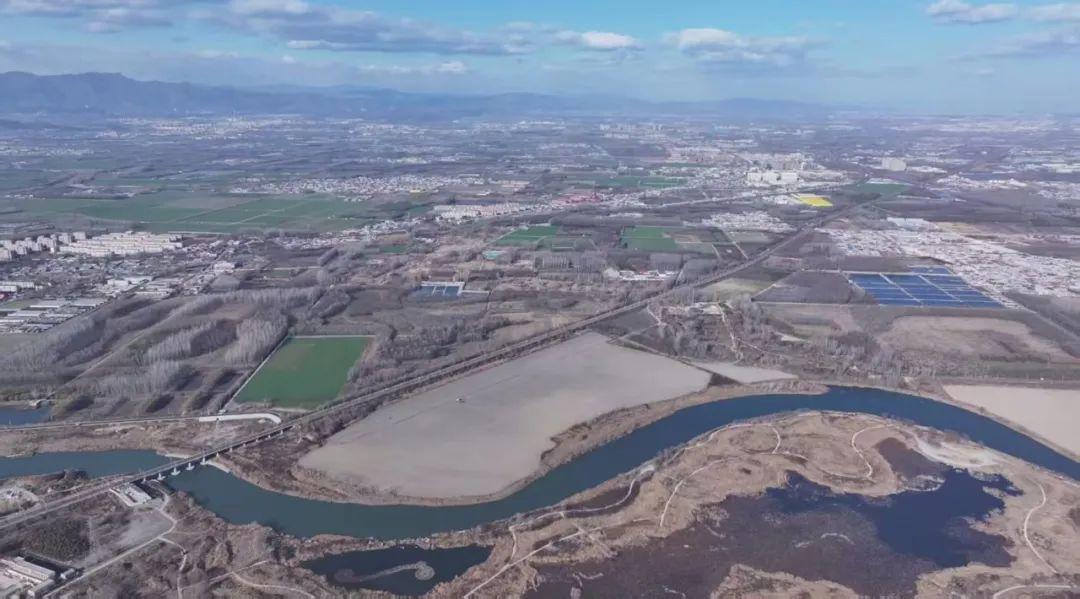
The Zhou Bridge located on the Bian River in Bianjing in the Northern Song Dynasty is always reminiscent of the famous painting "Surfing the River During the Qingming Festival" in the history of Chinese painting. "Tokyo Menghualu" has: "Near the two sides of the bridge, there are stone walls carved in the shape of sea horses, water animals and flying clouds. Stone pillars are densely arranged under the bridge, and cars are built to drive the road." No one thought that this The state bridge, which has appeared countless times in ancient poems and paintings, has actually appeared around the world through archeology in recent years. Although it is no longer the prosperity of the past, every stone and painting are written in the book.
The Paper learned that on March 28, China's top ten new archaeological discoveries in 2022 will be officially announced after the final evaluation. Among them, the Henan Kaifeng Zhou Bridge and the nearby Bianhe site are one of the 22 final evaluation candidates.

Part of "Along the River During the Qingming Festival" in the Northern Song Dynasty
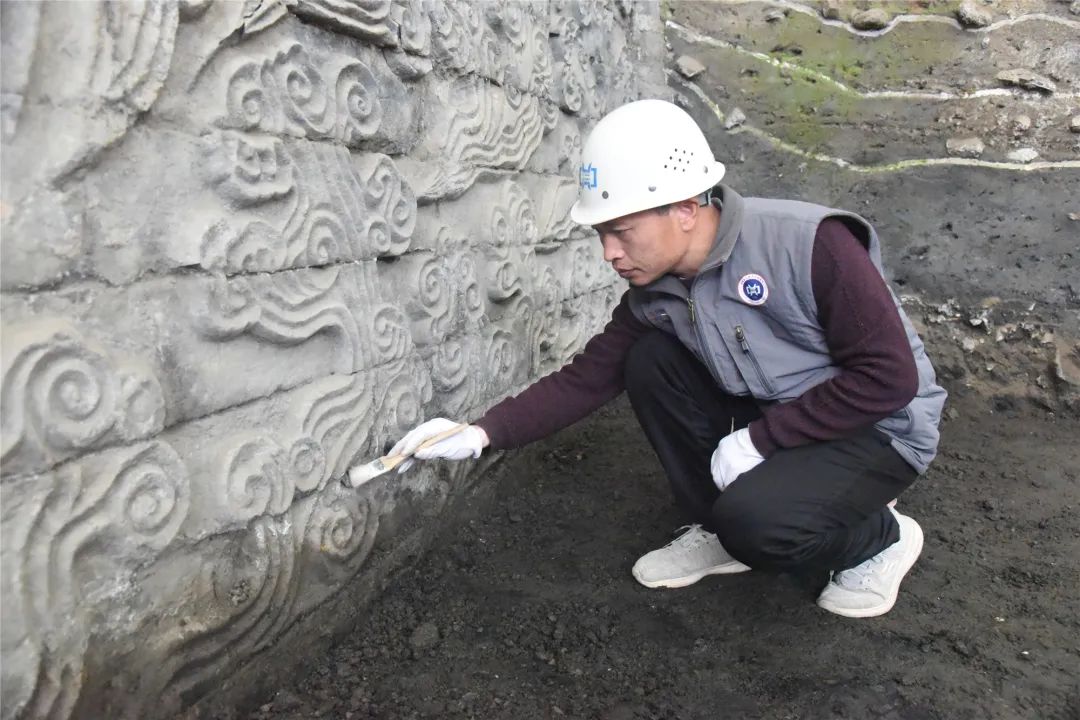
Archaeological Site of Zhouqiao Site
Wang Anshi "heard the old sobbing again tonight, but looked at the mountains and moon and talked about the Zhou Bridge", Mei Yaochen "the wind and snow on the embankment, the (zhou) bridge is full of restaurants", Fan Chengda "the north and south of the Zhou Bridge are Tianjie, and the parents are old and young. Waiting to drive back" and other poems about Zhouqiao have long been sung throughout the ages. Among the "Eight Scenic Spots of Bianjing" in ancient Kaifeng, the three sceneries of "Bianzhou Bridge with Bright Moon", "Bian River in Autumn", and "Sui Embankment with Smoky Willows" are all related to Bianhezhou Bridge.
The Zhou Bridge, which has been accumulated in history, has long been not only a bridge in the sense of transportation, but also an important cultural symbol representing Bianjing in the Northern Song Dynasty.
Zhouqiao is located about 50 meters south of the intersection of Zhongshan Road and Zizi Road in Kaifeng today. It is a landmark building at the intersection of Tokyo Chengyu Street and the Grand Canal (Bian River Section) in the Northern Song Dynasty. It was built in the Jianzhong period of the Tang Dynasty (780-783 Years), after the Five Dynasties, Song, Jin, Yuan, and Ming, until the fifteenth year of Chongzhen in the late Ming Dynasty (1642), it was buried by the sand after the Yellow River flooded. In 1984, the archaeological department conducted a partial trial excavation on it. The top of the masonry bridge deck is 4.5 meters deep from the current surface, and it is basically well preserved.
Since the Bian River entered Bianzhou City in the Tang Dynasty, it has shared the fate of Kaifeng City. The Zhou Bridge on the Bian River in the center of Kaifeng City is a witness to the history of Kaifeng's ups and downs for thousands of years.
In August 1984, when the Kaifeng Municipal Department was building sewer pipes, archaeologists discovered the ruins of Guzhou Bridge, which is located about 50 meters south of the intersection of Zhongshan Road and Freedom Road in Kaifeng today. Subsequently, trenches were excavated within the scope of the project, part of the bridge deck was cleared, and the silt in the bridge hole was dug out, and a preliminary inspection of the bridge site was carried out. The excavated state bridge is a north-south masonry arched bridge with a length of 17 meters from north to south and a width of 30 meters from east to west. The surface is about 12.5 meters deep and is basically well preserved. In 2018, the Henan Provincial Institute of Cultural Relics and Archeology jointly conducted a formal archaeological excavation on it. So far, the excavation area has been 4,400 square meters. In addition, more than 110 relics of ash pits, tombs, water wells, house building foundations, stoves, drainage channels, ditches, etc. were found in different periods, and more than 60,000 pieces of relics were unearthed. In particular, the large-scale relief stone walls found on both sides of the Bianhe River on the east side of Zhouqiao are currently the largest stone murals in the Northern Song Dynasty discovered in China. historical, cultural and aesthetic value.
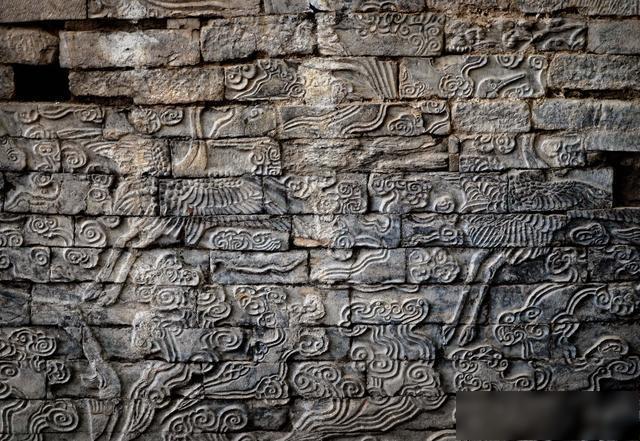
Part of the huge stone carving auspicious murals at the Zhouqiao site Xinhua News Agency
Liu Haiwang, the leader of the archaeological excavation team and the director of the Provincial Institute of Cultural Relics and Archaeology, said in an interview with reporters that Tokyo City in the Northern Song Dynasty was the capital city with the highest level of development and the largest scale in the world at that time, and it played an important role in the urban layout of Beijing City in the Yuan, Ming and Qing Dynasties. Influence. The archaeological excavation of the Zhouqiao site is of great significance to the study of the layout of Tokyo City in the Northern Song Dynasty, the remains of the Tokyo section of the Grand Canal water system, and ancient bridge construction techniques. The Zhouqiao stone murals are currently the largest stone murals discovered in the Northern Song Dynasty in China. They represent the highest standard of stone work system and the highest level of carving technology in the Northern Song Dynasty, filling the gap in the art history of the Northern Song Dynasty.

Relationship between Zhouqiao and Bianjing City
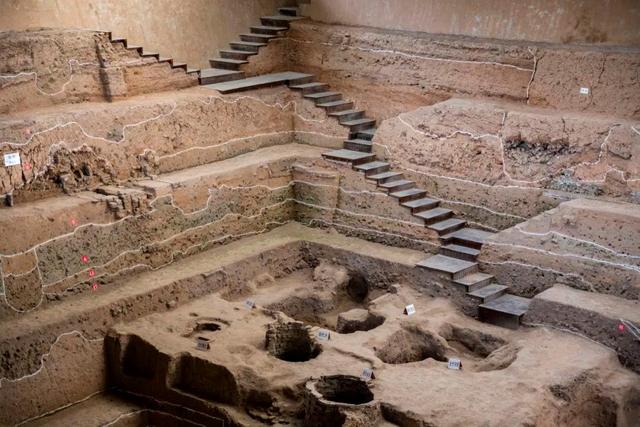
The ruins of the Tokyo Chengzhou Bridge in the Northern Song Dynasty in Kaifeng, taken on September 21, 2022. (picture from Xinhua News Agency)
An archaeological site version of "Along the River During the Qingming Festival"
Zhouqiao is a masonry single-hole arch bridge dating from the Ming Dynasty. The north-south span of the bridge deck is 25.4 meters, and the east-to-west width is about 30 meters. The east and west sides of the north and south abutments exhibit wild goose wings, plus the wild goose wings on both sides, the total width from east to west is about 50 meters. The bridge deck of Zhouqiao is slightly higher in the middle, and slopes to the north and south sides. The bridge coupons are made of green bricks, the face of the coupons is built with ax-blade stones, and the diamond walls on both sides of the bridge hole are built with bluestone strips along the east and west. When viewed from the side of the bridge hole, the cross-section of the bridge hole presents a shape similar to a city gate.

Restoration map of Zhouqiao in Ming Dynasty
According to the results of archaeological excavations and reference documents, it is speculated that the Song Dynasty Zhouqiao was a column-beam flat bridge with densely arranged stone pillars under the bridge, and the bridge no longer exists; the existing Zhouzhou Bridge was built in the early Ming Dynasty and was built on the basis of the Song Dynasty Zhou Bridge. Hole brick coupon stone (arch) bridge.
On the north and south banks of the Bianhe River on the east side of Zhouqiao, there are huge stone auspicious mural remains, engraved with seahorses, auspicious animals, auspicious clouds and so on. The decoration is about 3.3 meters high, and the exposed stone wall is about 23.2 meters long, forming a huge scroll.

Remains of Huge Stone Carved Auspicious Murals

Stone wall on the north bank of Bianhe River on the east side of Zhouqiao

Stone wall on the south bank of Bianhe River on the east side of Zhouqiao
A seahorse and two cranes in the stone wall constitute a group of patterns, each group of patterns is about 7.5 meters long, and each stone mural is presumed to have 4 groups of patterns (3 groups have been fully revealed, and another group was discovered in the Ming Dynasty. According to the code on the stone wall, it is speculated that the total length of each stone mural is about 30 meters.

Effect drawing of the stone wall on the north bank of Bianhe River on the east side of Zhouqiao
The stone wall is from bottom to top, and the seventh layer is the carving layer, and each piece of bluestone with patterns is numbered. The first letter of the number of the stone murals on the north side is taken from the traditional Chinese calligraphy textbook "Shang Daren", "The superior man is from the mountains and rivers, the middle man sits in the bamboo forest, Wang Sheng has his own nature, and Ping Ziben pays attention to it." "Thousand-Character Essay" "Heaven and earth Yuanhuang, the universe is prehistoric, the sun and the moon are full, and the celestial constellations are listed."
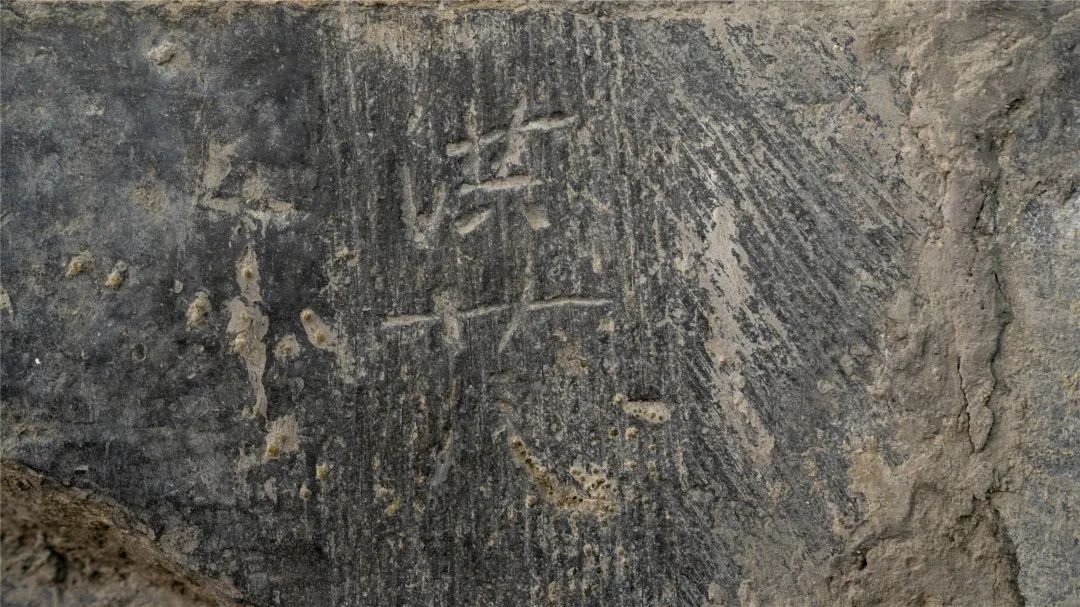
The inscription "Hong Erba" on the stone wall on the south bank of the Bian River on the east side of Zhouqiao
Tokyo City in the Northern Song Dynasty was a turning point in the history of capital cities in China. It had an important influence on the urban layout of Beijing City in the Yuan, Ming and Qing Dynasties. The Zhouqiao at the intersection of the central axis and the Bian River is one of the most representative landmarks; The archaeological excavation of the Zhouqiao site is of great significance to the study of the urban layout and structure of Tokyo City in the Northern Song Dynasty, and provided important materials for the discussion of national politics, economy, culture, etiquette, etc. in the Northern Song Dynasty.
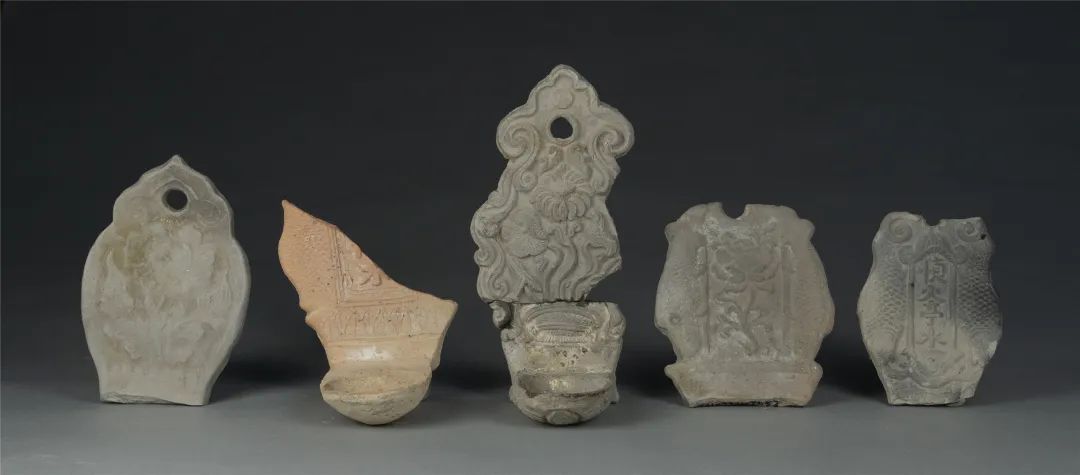
Northern Song Dynasty Ship Lantern
Zhouzhou Bridge is a typical representative of the canal heritage. Its archaeological excavations have restored the grand historical scene of the Grand Canal and the prosperity of Tokyo City, filled the gap in the heritage of the Tokyo section of the Grand Canal in China, and provided new insights for the research on ancient bridge construction techniques in my country. important information.
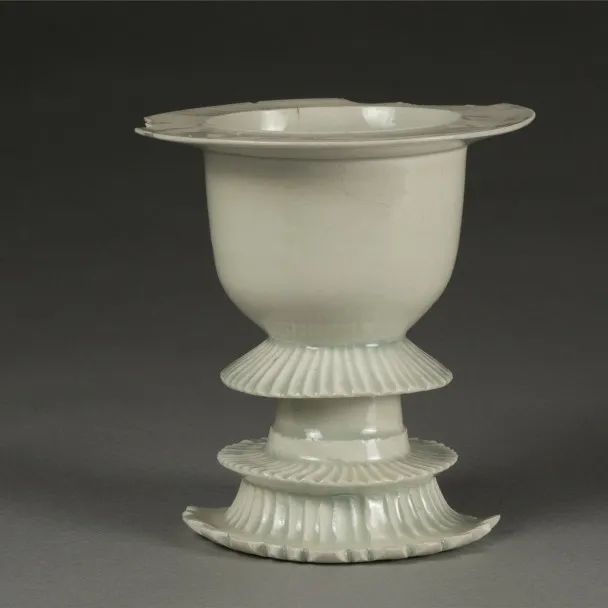
Northern Song Dynasty Jingdezhen Kiln Qingbai Porcelain Furnace
Liu Chunying, a professor and doctoral supervisor at the Yellow River Civilization and Sustainable Development Research Center of Henan University, believes that Kaifeng in ancient times was a city with a special relationship with the canal. In 365 BC, King Hui of Wei moved his capital to Daliang (today’s Kaifeng) and dug a gap to connect the Yellow River and the Huaihe River, turning the Central Plains into a water and land channel, which promoted the prosperity of Daliang and even Wei State, and opened the history of Kaifeng’s urban development. The first page of the glorious chapter. In the 22nd year of Qin Wangzheng (225 BC), the general of the Qin Dynasty "Wang Ben attacked Wei, diverted the (Yellow) River (Hong) ditch to irrigate the Daliang, and the Daliang City was destroyed", and the Daliang City was reduced to ruins in the torrential yellow water.
Since then, the resurgence of Kaifeng has formed an indissoluble bond with the Sui and Tang Dynasties Grand Canal. The middle section of the Grand Canal opened in the Sui Dynasty is named Tongji Canal, which was transformed from the ancient Bian River, and because it is close to Bianzhou, it is also called Bian Canal and Bian River. The Bianhe River connects to Heluo in the west and reaches the Jianghuai River in the south. Zhu led the river into Biankou, and then led the Bian water from the east of Daliang into Si, reached Huai, and entered the sea from Jiangdu Palace. Li Jifu: "Yuanhe County Maps" Volume 5). The Bian River was excavated in the Sui Dynasty, and it was abandoned in Tang, Five Dynasties, Northern Song Dynasty, and early Jin Dynasty. Especially in the Northern Song Dynasty, "the Bian River runs across China, and it is the first to inherit the great river, divert the rivers and lakes, benefit the South China Sea, half of the world's wealth, and the department stores of the mountains and lakes, all of them come from this road" (Yuan Tuotuo et al. : "History of the Song Dynasty" Volume Ninety-three "On the Bian River"), the material resources in the southeast area were continuously transported to Tokyo, so that Kaifeng was in the important position of "the hub of the world" and "the salty channel of all countries". Its prosperous scene has also been concretely preserved through Zhang Zeduan's immortal masterpiece "Surfing the River During the Qingming Festival" in the Northern Song Dynasty. As people at the time said: "If there is food, the capital can be established, and if the Bianhe River is ruined, the people cannot gather. The Bianhe River is the foundation of the founding of the country. Bianhe is Lai." (Ming Li Lian: "Remains of Bianjing" cited Zhang Fangping's "On the Pros and Cons of Bianhe") In a sense, it can be said that without Bianhe, there would be no prosperity in Tokyo in history, and without Bian There is no "Surfing the River During the Qingming Festival" that has been passed down through the ages. In Zhang Zeduan's "Surfing the River During the Qingming Festival", he depicted two main landscapes for us, one of which is the tall and majestic Tokyo City Tower, and the other is the elevated Hongqiao. Both Hongqiao and Zhouqiao were bridges on the Bianhe River in the urban area of Tokyo during the Northern Song Dynasty. According to the records of Meng Yuanlao of the Song Dynasty in "Tokyo Menghualu", "Hongqiao is called Hongqiao seven miles outside Dongshuimen", we can know that Hongqiao was still far away in the suburbs seven miles outside Tokyo at that time. Zhouqiao is located in the middle of Tokyo city, and it is the downtown area and commercial center of the whole city. If the area around Hongqiao was the east gateway of water transportation in Kyoto at that time, the vicinity of Zhouqiao was an important port where the Bian River penetrated into the capital, or it was a large-scale cargo transfer and distribution center in Tokyo. The scene of Hongqiao described by Zhang Zeduan is already a bustling scene full of people and traffic. From this point of view, the prosperity of the Zhouqiao area is self-evident.

▲The longitudinal section of the Zhouqiao bridge hole discovered in 1984. (profile picture)
In the Jin Dynasty, the Bian River gradually dried up. In the 15th year of Chongzhen in the late Ming Dynasty (1642 A.D.), the Zhou Bridge in Kaifeng City, together with the Bian River, was buried by the silt after the Yellow River flooded the city. In the archaeological excavation of the Zhouqiao site, in addition to discovering the main body of the Zhouqiao, its embankments on both sides of the north and south banks, and the relief stone walls of the Song Dynasty, the Bianhe River on the east side of the Zhouqiao was also deeply excavated, and the Bianhe River from the Tang and Song Dynasties to the Ming and Qing Dynasties was cleared. The remains of the river course, and the "Wooden Narrow River" project on the Bian River were found on both sides of the river, and the suspected shipwreck remains of the Bian River were found at the bottom of the river, which not only confirmed the records in the Song Dynasty notes "Tokyo Menghualu" and other related documents, It also coincides with the historical depictions of the canals in Tokyo, such as "Along the River During the Qingming Festival" and "Water Margin". It is like an archaeological scene version of the "Along the River During the Qingming Festival", which is of great significance to the archaeology of the canal site.
The large-scale stone murals of the Song Dynasty found on both sides of the Bianhe River on the east side of the Zhouqiao in this archaeology confirmed the record in "Tokyo Menghualu": "Zhouqiao is facing the Ouchi Imperial Street... its pillars are all made of bluestone, and the stone Liang stalagmite railings, near both sides of the bridge, are carved on the stone walls in the shape of seahorses, water animals, and flying clouds. Stone pillars are densely arranged under the bridge, and the roads are covered by cars." After technical testing, the oxide composition of the stone materials used in the stone walls, etc., are similar to those in the Xingyang section The stones in the Gouhe area are very close, which is basically consistent with the records in the literature that the source of the stones for the construction of Tokyo City in the Northern Song Dynasty was located in Xingyang.
The state bridge of the Ming Dynasty overlapped the bridge foundation of the Song Dynasty, witnessing Kaifeng's "city upon city"
Wang Sanying, deputy director of the Kaifeng Institute of Cultural Relics and Archaeology, said earlier that the main body of the Zhou Bridge discovered this time was built in the early Ming Dynasty. The north-south span of the bridge deck is 26.4 meters, and the total width from east to west is about 48 meters. The Zhou Bridge in the Ming Dynasty is a single-hole arch bridge of masonry structure, which is directly superimposed on the foundation of the Zhou Bridge in the Song Dynasty, further verifying the characteristics of Kaifeng's "city upon city".
Professor Zhu Shiguang, the former president of the Ancient Capitals Society of China, said in an interview with the media: "The phenomenon of 'city upon city' has long been recorded in the literature, but there has been no archaeological evidence to prove it....Due to the unique hydrological characteristics of the Yellow River, which is rich in sediment, Many large and small cities in the Yellow River Basin suffered the same fate as Kaifeng, but Kaifeng was the ancient capital of seven dynasties. It has so many overlapping layers and a large scale that it is unique in the 5,000-year history of civilization in China. It is also unique in the world's archaeological history and capital history."
Liu Chunying believes that the state bridge excavated this time was abandoned at the end of the Ming Dynasty. It was built in the early Ming Dynasty using the foundation of the state bridge of the Song Dynasty. The intuitive stratigraphic section reveals the phenomenon of "bridges upon bridges", "roads upon roads" and "rivers upon rivers" in the development and evolution trajectory of ancient Kaifeng City. A bridge spans thousands of years, and a river looks at the past and present, which can be said to show Kaifeng city upon city. An ideal window into the wonders of history and geography.
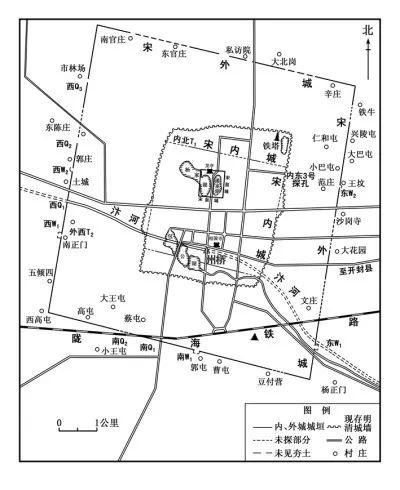
▲Actual measurement map of Tokyo city and Zhouqiao ruins in the Northern Song Dynasty. (profile picture)
Previously, archaeologists in Kaifeng had explored the Xuande Gate, Meridian Gate, Zhuque Gate, Nanxun Gate and other important sites in Kaifeng City in history on the north-south line of Zhongshan Road in Kaifeng at the Zhouqiao site, and initially revealed the ancient city of Kaifeng. The evolution track of the central axis of the traditional layout, this axis was formed as early as the Tang Dynasty in Bianzhou City, and then gradually improved through the development of the Five Dynasties and the Northern Song Dynasty, until the Jin, Yuan, Ming, and Qing Dynasties, its position has not moved. For example, the north-south span of the Zhouqiao ruins excavated in this archaeological excavation is 26.4 meters, and the east-west width is about 30 meters. One of the evidences is that this is extremely rare in the history of the development of ancient Chinese capitals and even in the history of cities in the world.
It is reported that during the archaeological excavation of the Zhouqiao site, more than 60,000 specimens of various cultural relics were unearthed, including pottery, porcelain, stone, jade, wood, bone, gold, silver, copper, iron, clam, and colored glaze. The gilt bronze statue is exquisite in shape and exquisite in workmanship, which is extremely precious. The statues are from the remains of the Temple of the Four Kings of the Golden Dragon in the Ming Dynasty on the ruins of the Zhouqiao Bridge. One of them is a statue of the Four Great Kings of the Golden Dragon, with six arms, wide open eyes, clenched teeth, sitting upright, and the other two are Wenchang. The statues of the Emperor and Emperor Zhenwu are important canal cultural heritage. According to "Kaifeng Mansion Records", the Temple of the Four Kings of the Golden Dragon was a famous river god temple in Kaifeng City in the Ming Dynasty. During the Ming and Qing Dynasties, the Yellow River flooded frequently in Kaifeng.
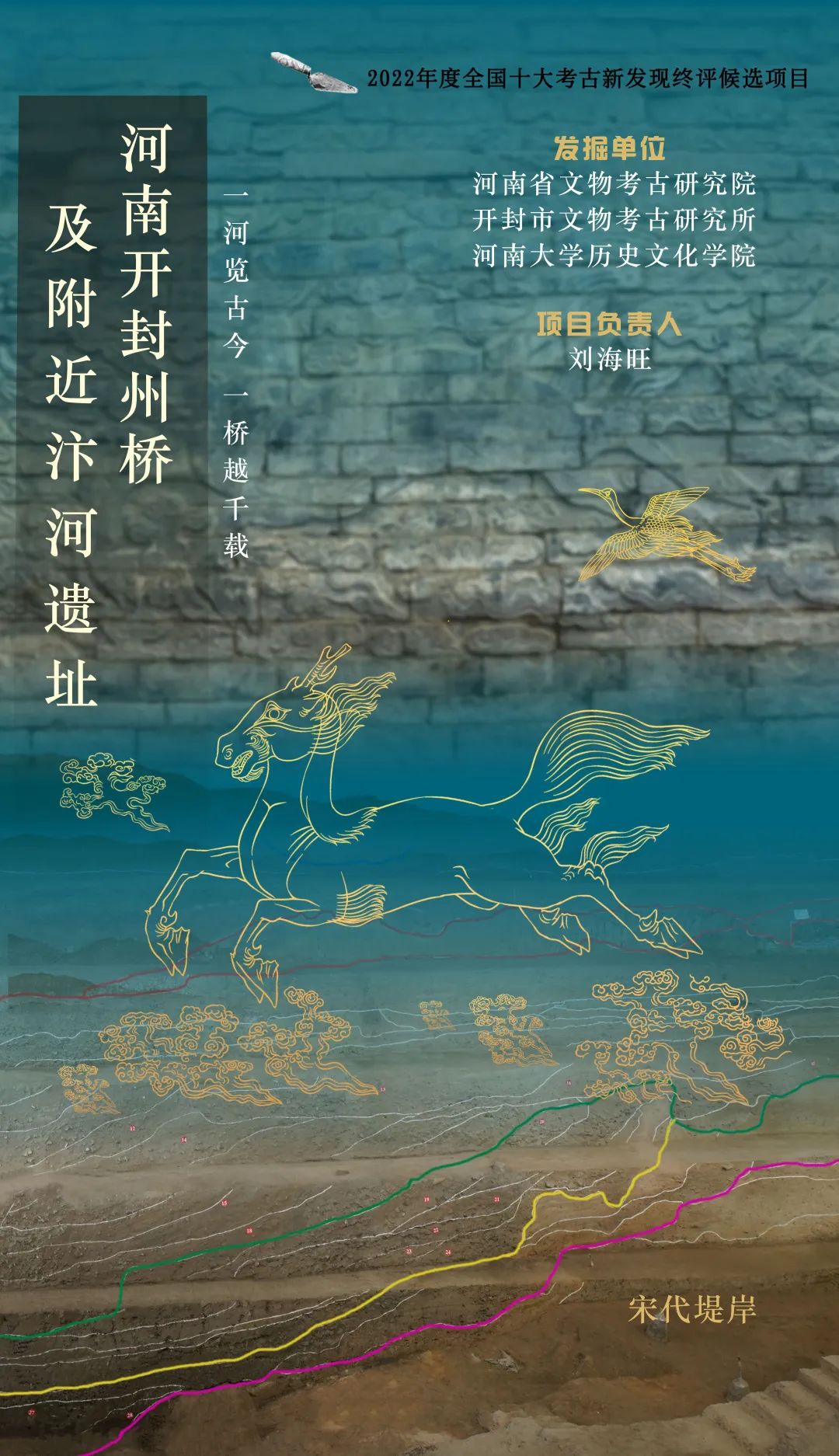
(Part of the content of this article is based on relevant historical documents, "Wenbo China", and related documents by Liu Chunying)
